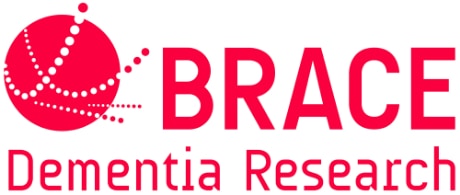Dr George Stothart
Pilot Project: University of Bath, 2017
George Stothart - Fast-Periodic-Visual-Stimulation – a new technique for assessing memory in Alzheimer’s disease (Pilot Study)
See glossary at bottom of page for definition of underlined words.
Summary
There is currently a great need to improve early diagnosis of Alzheimer’s disease (AD). Electroencephalography (EEG) coupled with Fast-Periodic-Visual-Stimulation (FPVS) will be tested as a method for the early diagnosis of AD. The validity of this diagnosis tool will be tested and improved. Electroencephalography (EEG) provides promise as a non-invasive, objective, and affordable method for early diagnosis of patients with AD. An effective early diagnosis tool will provide opportunities for drug development and interventions much earlier than is currently possible.
What do we already know?
Tools for the early diagnosis of Alzheimer’s disease (AD) are greatly needed. Newly emerging technologies are allowing brain function to be measured easily, cheaply and more accurately than ever before. Electroencephalography (EEG) provides a quick and effective method for measuring brain activity. EEG coupled with a visual test utilising Fast-Periodic-Visual-Stimulation (FPVS) is emerging as a new method for dementia diagnosis.
What are we trying to find out?
This project is seeking to refine and evaluate the assessment of memory using FPVS and provide evidence for the viability of the technique with wireless portable EEG systems. The use of FPVS and EEG will be evaluated as a tool for early diagnosis of AD.
How will this be done?
A one-minute test involving a specifically designed EEG headset will be tested on a series of test groups with and without AD. The test will evaluate the participants memory and observational skills to predict whether the individual has AD. This prediction will be compared to the current diagnosis of the patient to measure the reliability of the EEG diagnosis.
Why is this important?
Currently there is a great need to improve the early diagnosis of AD as this would provide opportunities for drug development and interventions much earlier than is currently possible. Electroencephalography (EEG) provides a non-invasive, objective, and affordable method for examining brain function but has not yet been fully utilised as an early diagnosis tool.
Glossary
Electroencephalography (EEG) - A non-invasive method to record the electrical activity of the brain.
Fast-Periodic-Visual-Stimulation (FPVS) - This is defined as visual stimulation of the brain (typically through images on a screen) at a periodic rate which leads to an electrical response which can be measured by EEG.
Further Information
Please click here for more information about the work of Dr George Stothart
Click here to read an update on Dr George Stothart's 'Fastball' project
Share this page
